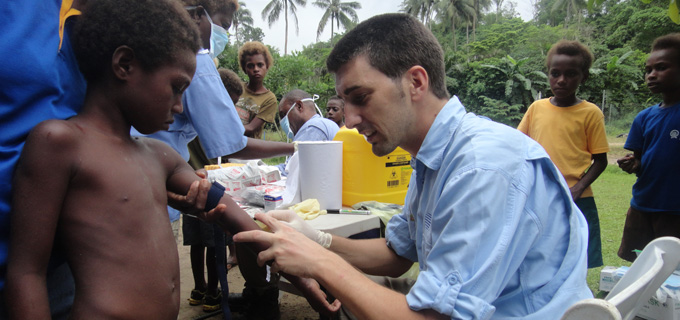By: Prime Sarmiento
Send to a friend
The details you provide on this page will not be used to send unsolicited email, and will not be sold to a 3rd party. See privacy policy.
[MANILA] A World Health Organization (WHO) programme will need to be revised from the current single-dose antibiotic treatment strategy to at least two doses of spaced administration plus effective monitoring for antibiotic resistance, recommends a new study.
Results of the study, published February in The Lancet, find that while a single-dose mass treatment with azithromycin reduced infection and transmission of Treponema pallidum pertenue, the bacterium that causes yaws, may be effective in the short term, it is inadequate to achieve long-term elimination of the disease.
The researchers, who conducted the study on Lihir Island in Papua New Guinea between April 2013 and October 2016, found that infection re-emerged after 24 months, with a significant increase at 42 months. They also reported the first documented emergence of an azithromycin-resistant T.p. pertenue strain that needed to be cured with penicillin injections.
“There is also a need for a strict surveillance system to detect missed cases as well as monitor visitors who may introduce the disease”
Kingsley Asiedu, World Health Organization
"It is significant that many new cases were not captured by the initial mass drug treatment, which had only 84 per cent coverage," says Oriol Mitjà, researcher at the Barcelona Institute for Global Health and first author of the study. Mitja says the WHO recommends 90 per cent coverage for effective yaws eradication.
Mitja tells SciDev.Net that the WHO will need to introduce repeated rounds of mass treatment with azithromycin spaced between three and six months, plus monitoring for drug-resistant strains in order to eradicate the disease.
Yaws, a skin disease which causes chronic disfigurement and disability, spreads via direct non-sexual contact. About 75 per cent of those affected are children under 15 years. Overcrowding and poor hygiene facilitate the spread of yaws.
"There is also a need for a strict surveillance system to detect missed cases as well as monitor visitors who may introduce the disease," Kingsley Asiedu, WHO medical officer responsible for the yaws eradication campaign, tells SciDev.Net.
According to the WHO, this highly contagious disease is still endemic in at least 14 countries, most of which are in Africa. On July 2016, the WHO certified India as the first country to eradicate yaws under the 2012 Neglected Tropical Diseases roadmap.From 1952 to 1964, WHO and UNICEF jointly led a worldwide campaign to eradicate yaws. More than 300 million people were examined and about 50 million were treated with injectable penicillin. By 1964, disease prevalence declined by almost 95 per cent and was eliminated in 90 endemic countries.
However, by the late 1970s, yaws, which the WHO described as a “forgotten disease”, showed signs of resurgence in several countries with weak primary healthcare. In 2012, WHO rolled out the single oral azithromycin strategy to eliminate it by 2020. The organisation aims to make yaws the second eradicated disease in the world, following smallpox.
This piece was produced by SciDev.net’s Asia & Pacific desk.














